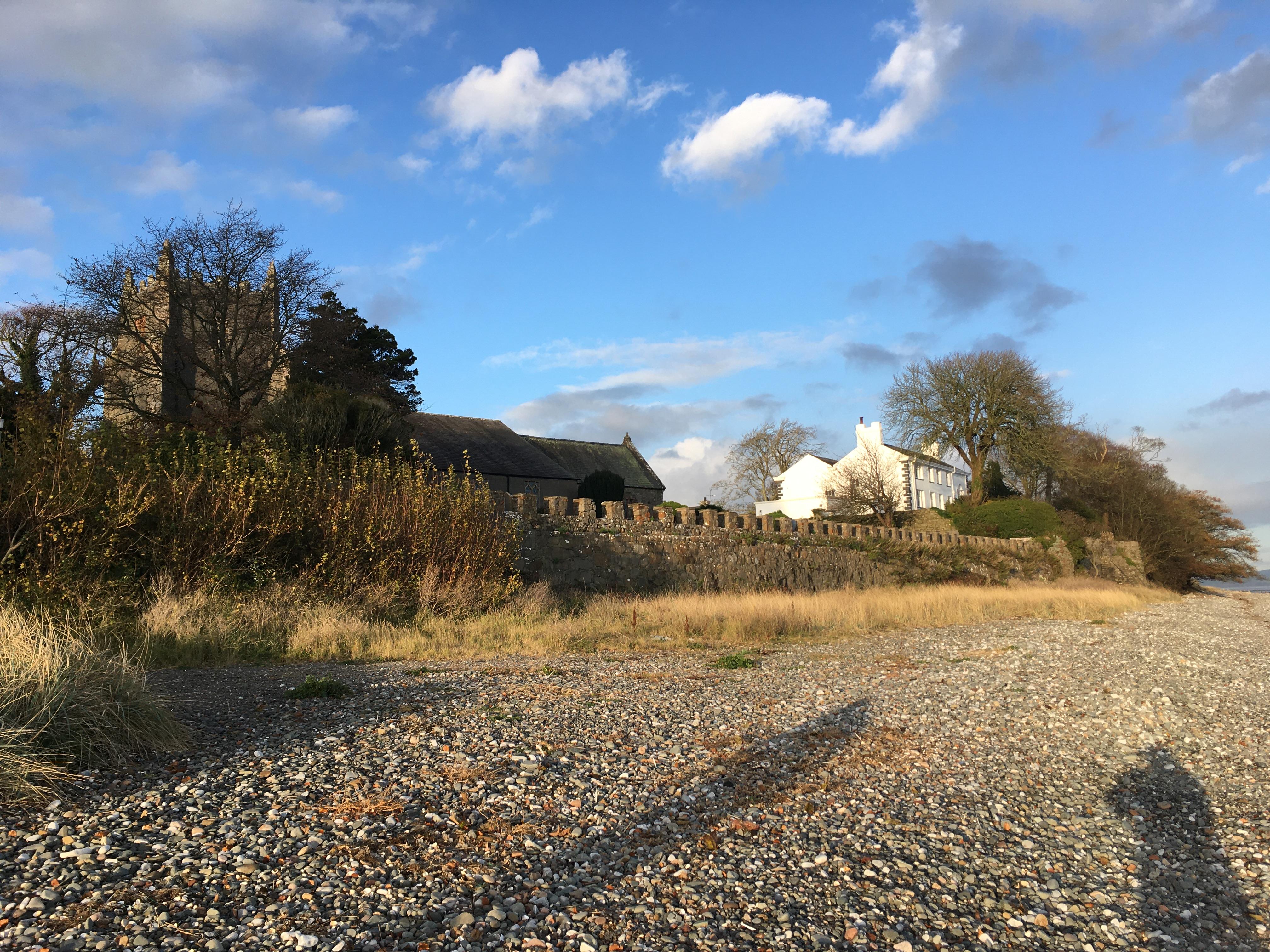St Mary the Virgin & St Michael
Great Urswick, Cumbria
St Mary and St Michael's church is said to have very early origins, as 9th and 10th century richly carved crosses were found on the site and are now on display in the church.

Aldingham church hugs the Cumbrian side of Morecambe Bay and is open to the wild beauty of the Bay, an area of designated county landscape importance and scenic beauty.
Aldingham, Cumbria
The church is largely of Norman origin (12th century) but a worn Anglo Saxon cross fragment in the east wall and some evidence of Viking burials suggests a much older sacred site.St Cuthbert's is located in a beautiful setting overlooking Morecombe Bay. The dedication is said to refer to the monks of Lindisfarne stopping here with the St Cuthbert's coffin, possibly with a view to taking them to Ireland to escape the Danes.
Aldingham is mentioned in the Domesday book and the church is thought to have been founded in 1147. The first rector Daniel le Fleming is recorded in 1180.
Between 1200 and 1250 the chancel was extended, traces of the earlier chancel and the differences in the ages of the arcades are clearly identifiable here; the north row is of 1845 but the southern row has round, and much lower, Norman arches with one waterleaf capital and, it is suggested, was also part of the original church.
The tower was built about 1350 and at the same time all but one of the Norman windows were replaced, the west window and battlements above are 15th century additions.
The chancel houses an old stone grave slab marking the grave of Goditha of Scales; the floral design cross dates the stone to the 13th century and suggests she may have been an abbess.
This was discovered when Revd Dr Stonard undertook a major extension to the north aisle in the 1840’s. He also opened the west door, pulled down the south porch, fitted new pews, paved the nave and put in the ceiling which now hides the beautiful wooden beams similar to those in the chancel. The timbers in the exposed chancel roof structure are interesting and may have been re-used from a shipwreck. The interior fittings are quite fine with a late seventeenth century Communion Rail and box pews from the middle of the 19th century.
The church building is simple in style and character but is a wonderful record of changing architectural style over the years. The ‘squint’ and ‘leper’s hole’ add further colour and interest to this place of prayer. Its location and its deep sense of peace attract a large number of walkers and other visitors to the Bay.
Great Urswick, Cumbria
St Mary and St Michael's church is said to have very early origins, as 9th and 10th century richly carved crosses were found on the site and are now on display in the church.
Dalton in Furness, Cumbria
Designed by Paley and Austin and constructed between 1882-1885, this imposing sandstone building occupies a spectacular elevated position behind Dalton Castle and Market Place.
Barrow in Furness, Cumbria
The impressive remains of an abbey founded in 1123 by Stephen, later King of England, including much of the east end and west tower of the church, the ornately decorated chapter house and the cloister buildings.